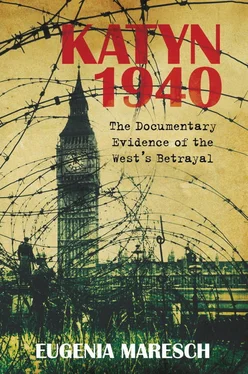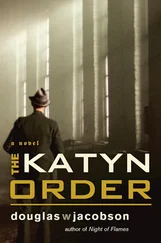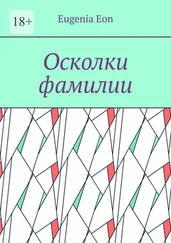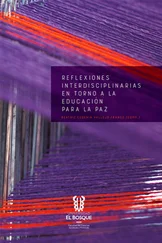6. The question of the nine documents were of trivial importance in comparison with the huge documentation held by the Germans, including diaries and hundreds of cards and correspondence, which stopped in spring 1940. The Burdenko report stated that ‘some’ of these documents had been found on six bodies of the first batch of 101, out of a total of 925, which had previously been exhumed by the Germans and had PCK metal tags on them. The Russians failed to produce the ‘rest’ of the documentation as evidence at the Trials.
Having presented these arguments before their Soviet counterparts, Maciszewski’s team subtly argued that to sustain the credibility of Burdenko’s report in the 1980s, further documentation was required to back up the original evidence and this should be released from the Russian archives. The Politburo knew of the existence of the Katyn papers, but the Central Committee was not, as yet, ready for such a bold step and decided to play for time. After four years of procrastination, the Historical Committee was disbanded, but a protocol regarding the construction of a cemetery went ahead. Gorbachev’s instruction to search Soviet archives for Katyn files continued. Fortunately for the Poles, Natalia Lebedeva, who was doing research on the movement of prisoners of war including the Polish officers from the Kozelsk camp, found papers amongst the NKVD files. This Top Secret material, called ‘Packet 1’, was located in the archives of the National Council of Ministers. This would indicate that all successive heads of state since Stalin knew of its whereabouts, but adopted a delaying tactic.
Once Pandora’s box had opened, Tass , the official organ of the Soviet government accused the NKVD of the wrongdoing and declared publicly that it was ‘the atrocity of the Stalinist period’. On 13 April 1990, the first batch of hundreds of documents was handed over by Gorbachev during the presidential visit to Moscow of Wojciech Jaruzelski. They consisted of lists of names from the Kozelsk and Ostashkov camps and included such information as rank and place of domicile. It was a highly selective and incomplete set of documents, but for the Poles this was an unheard of precedent, an opening of communications, at long last, between the Russo-Polish teams of researchers and scholars. They had to wait until April 1992 for the Archival Military Committee to be set up and begin work.
Lt Col Anatoly Yablokov, the first Russian Military Prosecutor in charge of the Katyn case, began his investigation in 1990. He called upon an independent historical committee. It contained Professors Boris Topornin, Aleksandr Yakovlev, Inessa Yazdborovskaia, Doctors Valentina Parsadanova, Lev Belayev (Forensic Medicine) and Yuri Zoria. He was the son of Nikolai Zoria, assistant to Rudenko at the Nuremberg Trials, whose unsuccessful task was to stop Ribbentrop speaking about the Secret Protocol to the German-Soviet Non-Aggression Pact of 23 August 1939; he was found dead the following day.
After three years of gathering evidence, Yablokov presented a motion under Russian criminal law, proposing that Stalin and members of the Politburo be judged guilty of the crime, based on Article 6 of the International Military Tribunal at Nuremberg. Creators of the Burdenko report and those who gave false testimony at Nuremberg were to be guilty of abuse of power. While those who perpetrated the murder were subject to the death penalty under the 1926 Criminal Code, without limitation of time. This obviously would have required new legislation in the Russian Duma, which was unattainable and the whole of Yablokov’s proposition was flatly rejected by the Main Military Prosecutor’s Office. It was on the insistence of the Polish Deputy Attorney General, Stefan Śnieżko that the investigation continued in Belarus and the Ukraine Prosecutor’s Offices to search for further documents on those from other camps. Grim exhumations of the dead at Mednoe (Ostashkov camp) and Kharkov (Starobelsk camp) were to proceed. [5] Katyń. Dokumenty Zbrodni Echa Katynia (Katyn, Documents of the crime), executive editorship: Wojciech Materski, Bolesław Woszczyński, Ewa Rosowska, Natalia S. Lebediewa, Nelli A. Petrosova. Naczelna Dyrekcja Archiwów Państwowych w Warszawie (Polish National Archives in Warsaw) and Państwowa Służba Archiwalna Rosji w Moskwie (National Archives of the Russian Federation in Moscow GARF ), Warsaw 2006, Vol. IV, document 135, 2 August 1993, p. 525–563; Katyn Crime Without Punishment , edited by Anna Cienciala, Natalia Lebedeva and Wojciech Materski, Obstacles to Reconciliation pp. 259–264, Yale University Press 2007.
The 1940 Soviet Politburo Document
In 1992, after Boris Yeltsin’s rise to power, not to be outshone by the now deposed Gorbachev, he released the two most important documents from the Presidential Archives of the Russian Federation. The first, dated 5 March 1940, was a motion presented to the Politburo by the People’s Commissar of the USSR for Internal Affairs, Lavrenty Beria, arguing for the liquidation of 25,700 Polish internees who had ‘transgressed against the Soviet State’ and who should face ‘justice of the highest order – death by shooting’. Beria accused the Polish officers of being ‘hardened, unrepentant enemies of Soviet authority, who, while in internment, continued their anti-revolutionary activities causing agitations against the Soviet State’. The verdict was a state secret and was to be overseen by the ‘ Troika ’: Vsevolod Merkulov, Bohdan Kobulov and Leonid Bashtakov.
The second document was an extract from the minutes of a meeting held on 5 March 1940 by the Political Bureau of the Central Committee, accepting the motion and signed by Stalin, Kliment Voroshilov, Molotov and Mikoyan; in the margin, annotated by the secretary, two additional names had been added, that of the absent Mikhail Kalinin and Lazar Kaganovich, both ‘for’ the resolution. (At the same meeting, the Central Committee approved the building a new sarcophagus for Lenin.) This time the bearer of truth for the Poles was the Director of GARF , The National Archives of the Russian Federation, Professor Rudolf Pikhoia, who in Warsaw on 14 October 1992 handed the document to Lech Wałęsa, the first non-communist President of a newly restored sovereign Poland. [6] Katyn Dokumenty Zbrodni, Jency nie wypowiedzianej wojny (Katyn. Documents of the crime), Vol. I, documents 216 and 217, 5 March 1940.
Among the documents passed to Lech Wałęsa was an important, handwritten draft by KGB chairman Aleksandr Shelepin, intended for Nikita Khrushchev in 1959. Based on the decision by the Special Troika of the NKVD , Shelepin advised that according to the evidence, the total number of Polish officers shot in 1940 was 21,857: 4,421 were shot at Katyn; 3,820 at Kharkov; 6,311 in the Kalinin region and 7,305 in Western Ukraine. In his opinion the sealed archives kept in the Committee of State Security of the Council of Ministers had ‘no further operational or historical value to the Soviet organs or our Polish friends’. Mindful of some indiscretion that might arise through western interest in Katyn, he strongly recommended their destruction. After all, he argued, the official document prepared by academician Burdenko was ‘sufficient proof to indicate that the Germans were responsible for the deed’. [7] Echa Katynia Vol. IV, document 93, 9 March 1959.
British Policy on Katyn in the 1990s
The response of surviving members of the Katyn families was muted. It was felt that the Soviet admission and Britain’s cool acceptance of the truth, which they had avoided for over half a century, was inadequate. The relatives of the dead were waiting for some kind of justice – a condemnation of those responsible for the genocide. The suffering of widows who lived through the trauma of Katyn has never been fully acknowledged by any of the wartime allies.
Читать дальше












